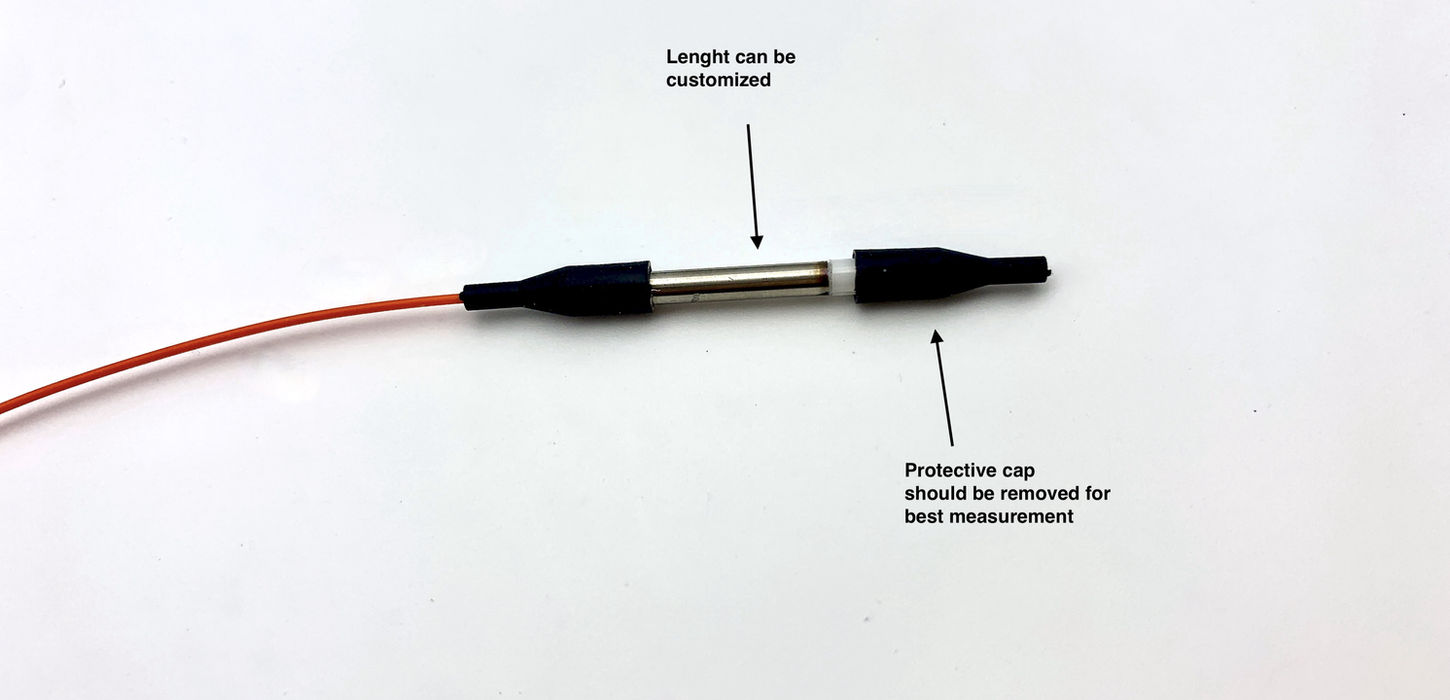Alpheus standard
This sensor has been designed for use in harsh environments, offering high sensitivity and a wide bandwidth. It is fully calibrated for sensitivity and frequency bandwidth.
Thanks to its compact size, it enables the study of high-frequency acoustic waves in ducts.
Typical applications:
Turbine analysis (compressor stall analysis)
Non-destructive testing
High-voltage measurements (overhead lines, electrical transformers)
Arc or high-frequency welding processes
Measurements in ATEX environments
Resonance frequency: from 30 kHz to 1 MHz. Typical values: 70 kHz, 100 kHz, 150 kHz, 200 kHz, 400 kHz.
High‑pass frequency: typically 100 Hz.
±3 dB bandwidth: one‑third of the resonance frequency.
Sensor sensitivity: varies with resonance frequency, ranging from 1 µV/Pa to 5 mV/Pa.
Maximum permissible pressure: from 130 dB to 220 dB SPL.
Dynamic range: typically 60 dB with microMyotis, 80 dB with Myotis Standard, 100 dB with miniMyotis.
Examples of sensors in stock:
Alpheus70
Alpheus100
Alpheus400
Operating temperature: from -40 °C to +125 °C.
Operating ambient pressure
Front‑vented sensor
Highlights:
Excellent sensitivity and wide bandwidth (up to 400 kHz), ideal for high‑frequency acoustic analysis.
Robust design for harsh environments: extreme temperatures (-40 °C to +350 °C), 100 % humidity, and EMI/RFI resistance.
Very diverse applications: turbine analysis, non‑destructive testing, high‑voltage measurements, ATEX environments, arc or HF welding.
Advanced miniaturization: its reduced diameter (down to 1.6 mm) makes it well suited for confined or hard‑to‑reach environments.
Factory calibration: each sensor is delivered ready to use, ensuring reliable performance.
Use cases for the Alpheus Standard sensor
Industrial turbine analysis
Purpose: monitor blade integrity or detect mechanical defects via acoustic analysis.
Benefit: sensor can be placed close to the airflow or inside a housing without electromagnetic interference.
Example: hydroelectric plants, aviation, gas turbines.
Non‑destructive testing (NDT)
Purpose: detect microcracks, delaminations, or mechanical stress in materials.
Benefit: very wide bandwidth (up to 400 kHz) and fast response.
Example: weld inspection, composite part testing, aircraft hull inspection.
Measurements in high‑voltage or strong magnetic‑field zones
Purpose: acquire acoustic data in electrically noisy environments.
Benefit: complete immunity to EMI/RFI (no metal conductors).
Example: transformers, high‑voltage lines, superconducting coils.
Monitoring arc or high‑frequency welding processes
Purpose: real‑time quality control or acoustic defect detection during welding.
Benefit: small form factor plus good thermal tolerance and measurement stability.
Example: welding robots, automotive or aerospace manufacturing.
ATEX environment applications
Purpose: acoustic monitoring in explosive‑atmosphere zones (petrochemical, gas, mining).
Benefit: passive sensor requiring no active electrical power.
Example: gas leak detection, abnormal noise monitoring in secured areas.
Diagnostics in ducts or closed structures
Purpose: study acoustic propagation or resonance in narrow channels.
Benefit: ultra‑small diameter (down to 1.6 mm) and fully dielectric sensor.
Example: medical instruments, flow analysis in tubes, MEMS devices.
Contact us
All products
Boxes
Pressure measurement
Acoustic & dynamic pressure measurement
Temperature measurement
Categories





